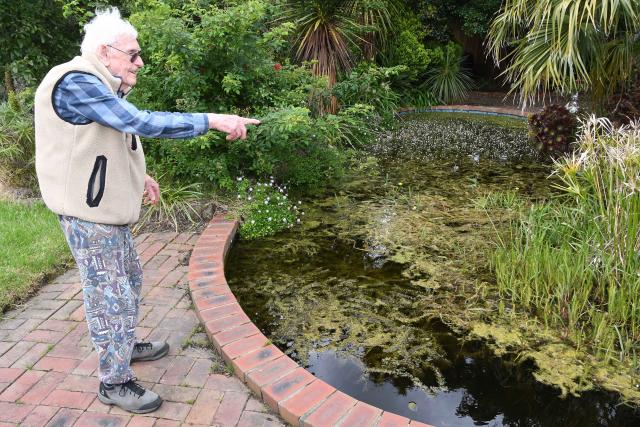Berwick resident Peter Fleming said he was delighted when a group of 12 ducklings appeared in his back pond on Saturday 19 November.
But by Wednesday afternoon, they had met the fate of a local black cat, he believes.
Now, Mr Fleming wants to raise awareness about the importance of keeping feline friends indoors.
“I know some people love their cats, but it’s a question of how they can care for their cats so that the rest of the wildlife doesn’t get destroyed,” he said.
“[Cat owners] should keep them in the house…they shouldn’t just end up roaming off into the street and certainly not at nighttime.”
Laws surrounding the containment of cats in Victoria is dependent on your local council.
According to the City of Casey website, residents must keep cats within their property at all times.
Under the Casey Community Local Law 2018 and the Domestic Animals Act 1994, you may be fined if your cat is found wandering outside your property.
“By keeping your cat in your property, you can help it live up to three times longer. Your cat will not get hit by cars, get injured in a fight or catch any diseases,” the website said.
Residents who face issues with neighbourhood cats can lodge a formal complaint to the council, but it is recommended to speak to the pet’s owner before taking action.
The City of Casey also has a restriction in place prohibiting the keeping of cats in the Botanic Ridge and Settlers Run Estate. These two areas are close to the Royal Botanic Gardens in Cranbourne and are home to many native and endangered animals, including the endangered Southern Brown Bandicoot, the council said.
Despite the presence of the law, the City of Casey Domestic Animal Mangement Plan 2021-2025 found 84 per cent of participants in community consultation demonstrated they were unaware of laws relating to cats in the City of Casey.
In 2020-2021, there were 376 cat nuisance complaints made to Casey Council.
Mr Fleming said the ducklings had spent the entirety of their short lives in his backyard, which includes a frog pond converted from a swimming pool.
He believes the ducks’ nest is perched within dense shrubbery surrounding the pond.
While he hasn’t found any evidence of the damaged nest, nor the ducklings, Mr Fleming believes there was no other avenue for the ducks to disappear from his backyard.
“They couldn’t fly, they couldn’t get out of this little area, there’s nowhere to get out there so they couldn’t have gone somewhere else,” he said.
“We hadn’t seen that cat before, that was a new site to us, it was walking up and down the pond, probably looking for something extra.”
After the last sighting of the duckling brood on Wednesday morning, Mr Fleming said he saw the cat later in the afternoon.
Shortly after that, one of the adult ducks returned to the pond for several hours, but no ducks have been seen since.
“I watched it all afternoon and it was just sitting in the pond, looking around and staring for about five hours,” he said.
“Then it just took off from the middle of the pond, flew away and didn’t come back.
“There’s been no sign of any of them since…they were here almost every day before that.”
A 2020 study by The University of Sydney found that roaming pet cats killed an estimated 390 million animals per year in Australia, including reptiles, birds and mammals.







